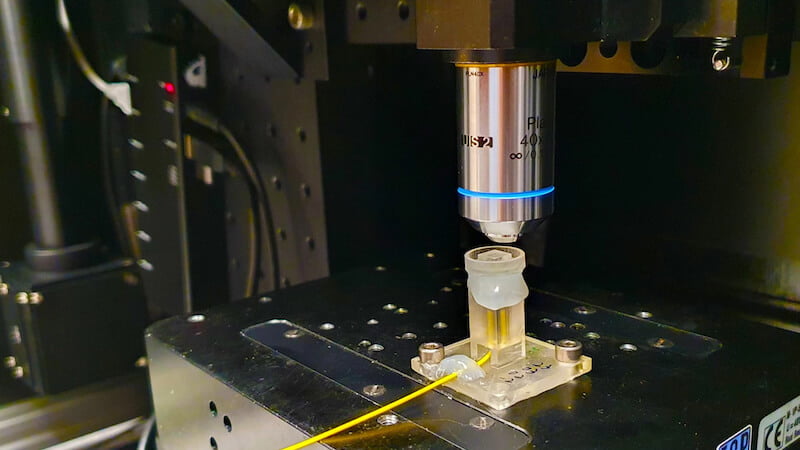
Researchers have printed micro-optics made of quartz glass directly onto glass fibers using a 3D printer. The result: The technology could drastically increase internet speeds.
There has been progress in the expansion of the Internet in many places in recent years. Most households now have a broadband connection. At the same time, a smaller proportion already receive data at over one gigabit per second. As ever larger amounts of data flow through the international Internet nodes, scientists are continuing to work on even faster and more reliable transmission technologies.
Swedish researchers recently developed a method to print micro-optics made of quartz glass directly onto optical fibers. The approach promises not only higher internet speeds, but also improved sensors and advanced imaging systems. The technique avoids damage to the delicate coatings of the optical fibers that can be caused by high temperatures.
Micro-optics from the 3D printer are intended to increase Internet speed
The method overcomes previous limitations in structuring fiber optic ends with quartz glass. This process often requires high temperatures to remove the carbon and make the glass structure transparent. The new process starts with a base material without carbon, which avoids high temperatures. The team demonstrated the production of a quartz glass sensor that is more robust than conventional plastic sensors.
This sensor proved to be more robust and was able to measure the concentration of organic solvents. This continues to be a challenge for plastic sensors, as solvents quickly corrode the sensor. The printed glass structure is so small that 1,000 micro-optics fit on the surface of a single grain of sand.
Possible use in medical devices and quantum networks
The researchers also demonstrated a technique for printing nanogratings as ultra-small patterns that can manipulate light in a precise way. These nanogratings have applications in quantum communication as they allow for the control and manipulation of light at the nanoscale. The research team also emphasizes that the ability to print arbitrary glass structures directly onto optical fibers can open up new possibilities in photonics.
This research is expected to have wide-ranging applications, including microfluidic devices, MEMS accelerometers, and fiber-integrated quantum emitters. The technique could also be useful in the production of drugs and chemicals by enabling more precise and robust sensors and devices.
Also interesting:
Source: https://www.basicthinking.de/blog/2024/06/08/optiken-3d-drucker/


